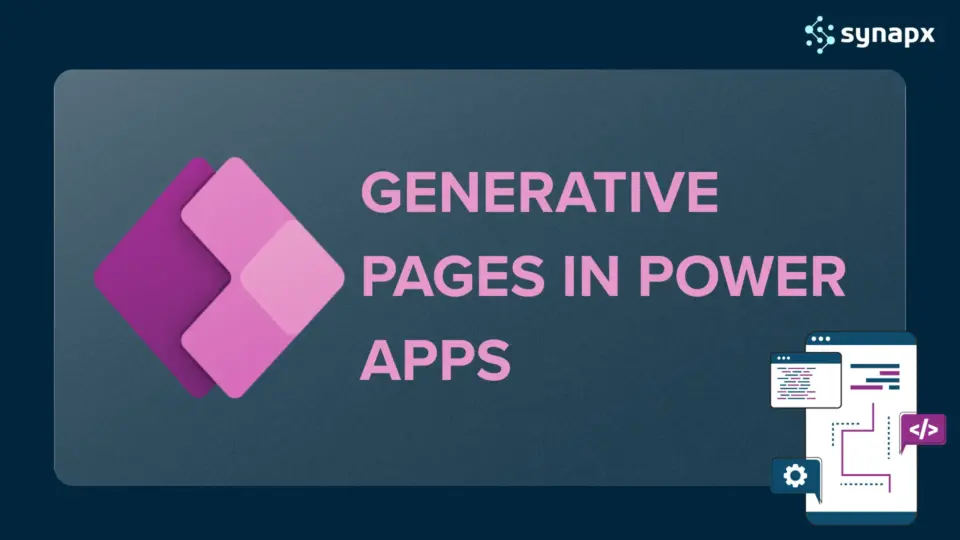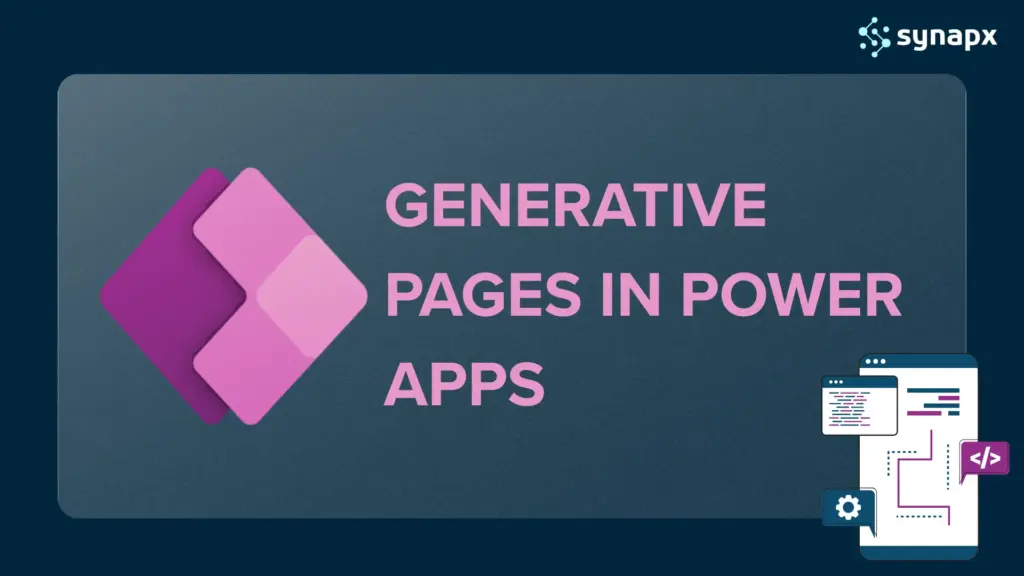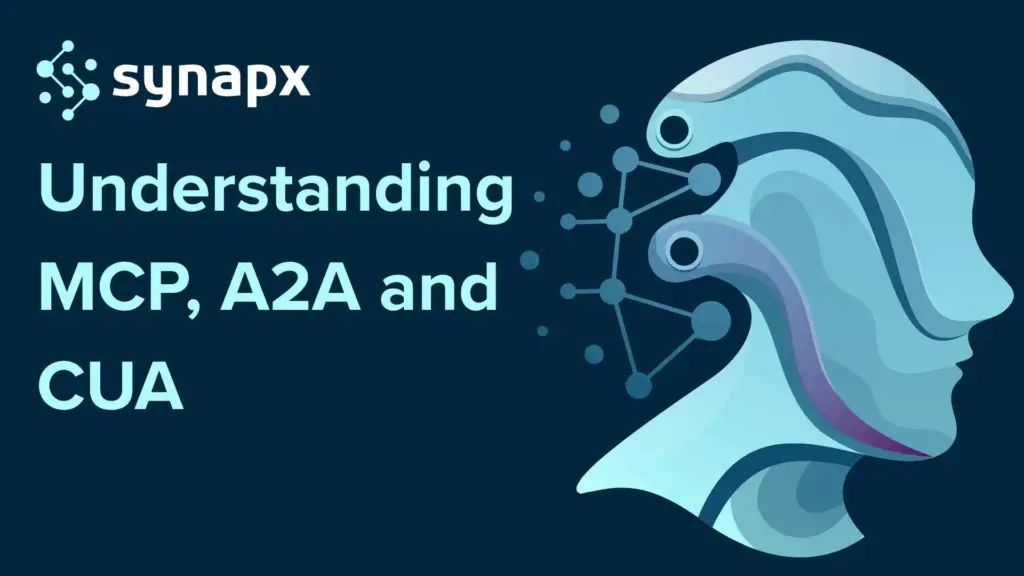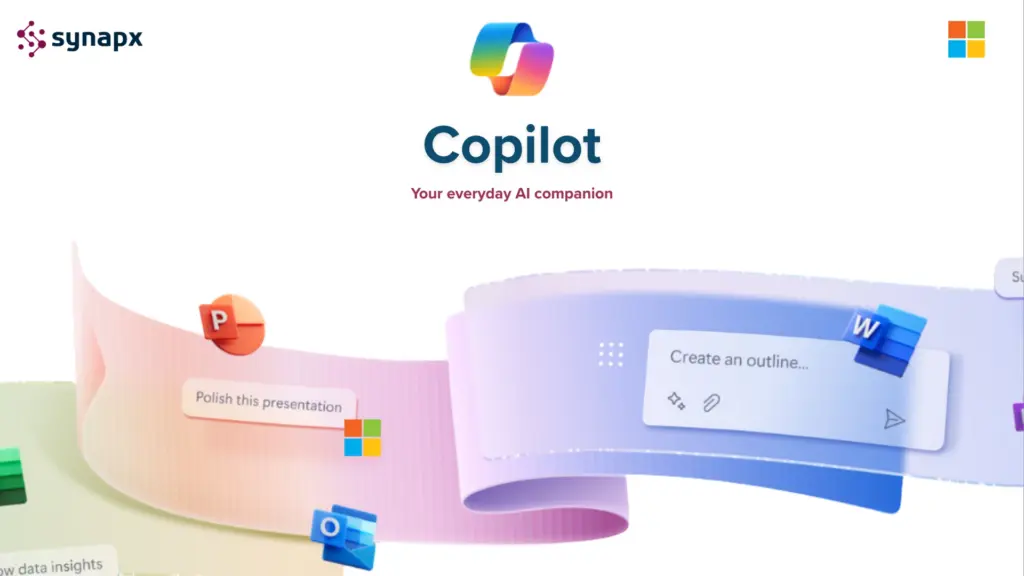Microsoft Power Apps gives businesses a way to quickly create applications without the heavy lift of traditional software development. Historically, Power Apps has offered two main approaches: canvas apps, where you design the UI freely, and model-driven apps, which are data-first and follow best practices for business processes.
Each approach has pros and cons: Canvas apps are flexible but require design work; model-driven apps are fast for data-driven scenarios but can feel rigid in layout.
Generative Pages bridge the gap. They let makers describe the page they need in plain language and have Power Apps create a production-ready, responsive React page that plugs into your data model.
Instead of assembling components or writing code, you simply describe what you want to see: “show my order records as a gallery of cards with order number, customer, payment type, and paid date,” and the AI builds it.
Why Microsoft Introduced Generative Pages?
Microsoft introduced Generative Pages to solve a common friction point: customising UI in model-driven apps without a heavy engineering lift. Many organisations want the structured benefits of model-driven apps (security, governance, Dataverse integration) while also wanting modern, user-friendly interfaces. Generative Pages answer this by combining the best of both worlds: enterprise-ready data handling plus AI-assisted page design.
Generative Pages speed up delivery, reduce back-and-forth between product, design, and engineering teams, and lower the technical bar for business teams to produce usable interfaces. For organisations that need rapid internal tools or customer portals, that velocity is a competitive advantage.
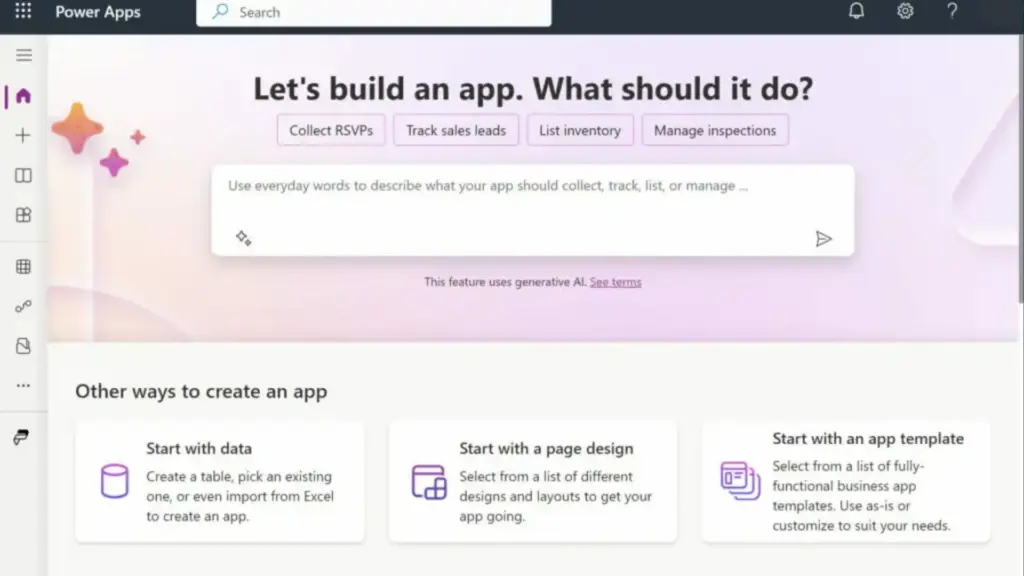
How They Differ from Traditional Page Design?
Traditional page design in model-driven apps often required either accepting the default forms and views or engaging a developer to build custom components. With Generative Pages, the platform generates React-based pages inside Power Apps using your natural-language instructions and the schema of your Dataverse tables. The pages are pre-viewable, editable, and can be re-prompted, so you can iterate quickly: ask for dark mode, add click actions, change colours, or attach a reference image, and the agent will update the page accordingly.
In short, instead of dragging UI controls or writing code, you provide intent and reference; the AI produces working pages, and you refine.
Key Features of Generative Pages
AI-Assisted Page Creation
The core feature is natural-language input. Describe the page you need, and then the agent generates the UI and the underlying React code. You can be high-level (“a dashboard of orders by status”) or detailed (“show a gallery with order number, customer name, payment type, and a click-through to the record”). The system interprets the table schema and creates fields and bindings automatically.
Pre-Built Layouts for Faster Development
Generative Pages understands common UI patterns – galleries, kanban boards, multi-step forms, dashboards, and produces layouts that follow modern design standards. This saves time; instead of building a component from scratch, you get a usable layout you can fine-tune.
Seamless Data Integration
Generated pages connect out of the box to Dataverse tables. When you specify the data context (for example, “Order table”), the agent maps columns to UI elements and wires CRUD operations where appropriate. That means full read and write capability without manually wiring API calls.
Customisation Options with Copilot
Generative Pages pair with Copilot-style iteration. You can ask the agent to refine styling (brand colours, spacing), add interactions (drag-and-drop, card click behaviour), or tailor accessibility features. If you need an interaction to trigger a flow or call a plugin, the platform supports that extension path – AI gets you most of the way, and developers can add custom logic as needed.
Benefits of Using Generative Pages
Generative Pages accelerate development – tasks that took days now take minutes. They lower the barrier for non-developers, business analysts, and power users to create functional pages using plain language. Interfaces are more consistent and user-friendly because the AI generates designs that follow modern patterns, reducing the design debt and user confusion.
From an operations perspective, Generative Pages reduce IT workload and cost because less bespoke front-end engineering is required. IT still manages governance, security, and integrations, but routine UI work shifts to makers. This balance speeds delivery, reduces backlog, and lets engineering concentrate on complex integrations and performance.
Practical Use Cases for Generative Pages
Internal Employee Tools
Teams can spin up dashboards that track KPIs, service queues, or approval flows. An HR lead can generate a candidate-tracking page, while operations can build a field service checklist, all by describing requirements in natural language. This significantly shortens iteration cycles for internal tools that previously required months to build.
Customer Portals and Self-Service Platforms
Generative Pages are ideal for customer-facing pages that require data access and secure workflows; order tracking, returns portals, and account dashboards. Businesses can deliver a modern self-service experience without building a separate web app, because the generated pages live inside model-driven apps that already respect your security model.
Rapid Prototyping and MVPs
For product teams and startups, Generative Pages enable rapid prototyping. Describe the screens you need for an MVP and get working pages fast. This lowers the cost of experimentation; teams can validate user flows, gather feedback, and iterate before investing in custom development.
Industry-Specific Apps
Finance can use Generative Pages to create loan-application flows or compliance dashboards; education teams can produce student progress pages and course catalogues; retail teams can build inventory and order-management views with drag-and-drop status updates. Because pages bind directly to Dataverse, industry-specific data models map neatly to the UI.
How to Create Generative Pages in Power Apps?
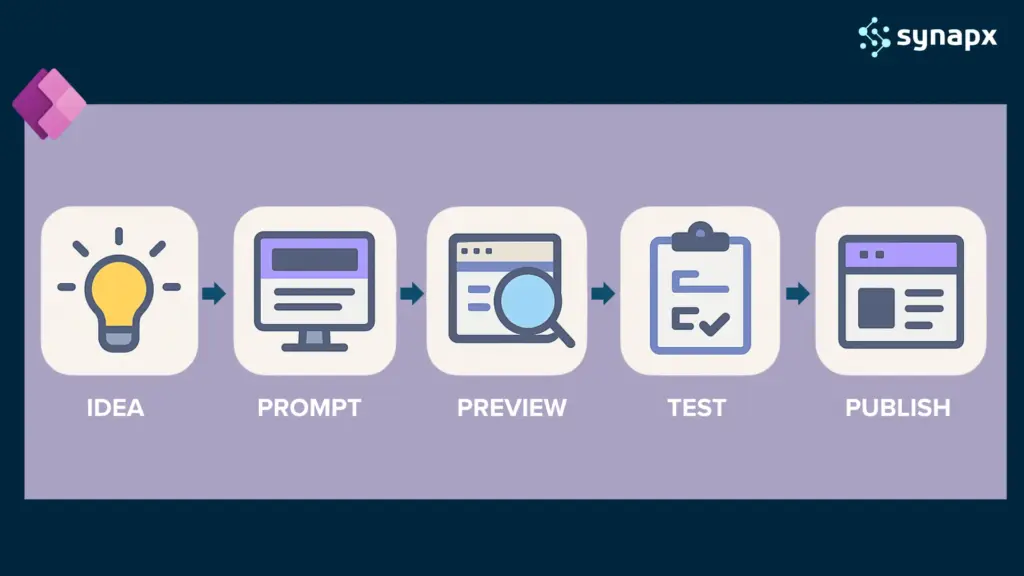
Setting Up Power Apps Environment
Start in the Power Apps maker portal. Ensure you have a model-driven app and the right permissions. If you’re using Dataverse, confirm the tables and columns you need are in place. For teams, ensure environment governance (security roles, data loss prevention policies) is configured before publishing customer-facing pages.
Choosing a Data Source
Pick the Dataverse table or view the page that should be used (for example, Orders, Cases, Students). Think about the user’s task first – are they browsing records, updating status, or performing full CRUD? That decision guides whether you ask for a gallery, a kanban board, or a multi-step form.
Generating and Customising Pages
Open the Generative Pages experience and give context: name the table and describe the page in plain language. Start with a simple request, a gallery or board, and preview the generated page. Use iterative prompts to refine behavior: ask the agent to make cards clickable, add a dark-mode toggle, or change brand colors. If you provide a reference image, the agent will match styling cues. After the AI generates code, you can preview the page in read-only mode, test interactions, and request further changes.
Practical tips for a smooth journey:
- Begin with a small, focused page (one task).
- Use clear, concrete instructions (fields to show, required behaviors).
- Attach a reference design or color palette if you want brand alignment.
- Test data bindings with real records to validate filters and permissions.
- Ask the agent to add accessibility labels and field validations up front.
Publishing and Testing Your App
When satisfied, publish and refresh your model-driven app. Validate on desktop and mobile. Test edge cases (no-data states, large record sets). Add telemetry or analytics to measure user behavior, which informs future prompts and improvements. If you need custom logic, hand the generated React page to a developer for extensions (custom connectors, plugins, or performance optimisations).
Generative Pages vs Traditional Power Apps Pages
When to Use Generative Pages
Choose Generative Pages when you need speed, consistency, and close integration with Dataverse. They’re perfect for internal tools, self-service portals, and prototypes where rapid delivery and iterative refinement matter more than pixel-perfect control.
When Manual Customisation Is Better
If your product demands unique branding, complex animations, or bespoke front-end logic that must be tightly optimised, a canvas app or hand-coded front-end might still be the right call. Also, when implementing large-scale customer-facing portals with heavy custom performance needs, plan to combine generative pages with traditional development for critical sections.
Future of Generative Pages in the Power Platform
Generative Pages point to an AI-first, low-code future. Expect deeper Copilot integration, richer multi-dataset pages, and industry-focused templates. Over time, AI will handle more of the repetitive UI work while developers focus on security, scale, and advanced integrations.
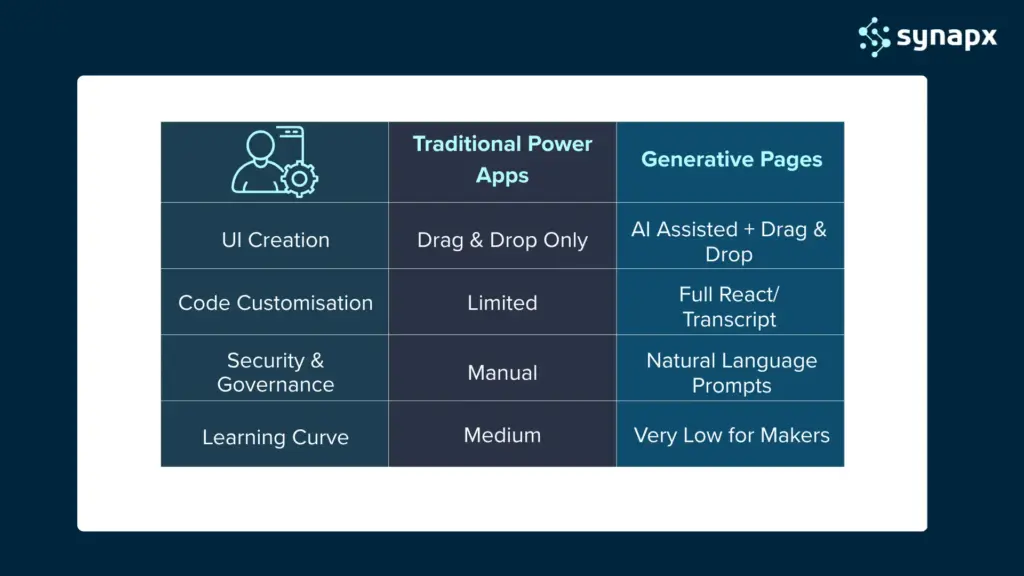
Conclusion
Generative Pages transform the way teams build model-driven experiences in Power Apps: they are faster, easier to iterate, and tightly integrated with your data layer. For organisations trying to move faster without sacrificing governance, this is a powerful new tool. Start small, design around user tasks, and use iterative prompts to refine pages. If you want help mapping this into your tooling or creating a pilot, contact us today.
